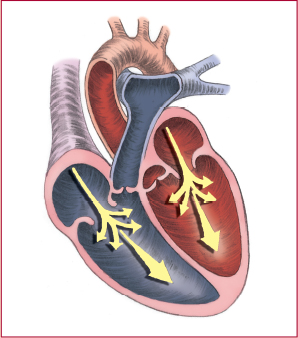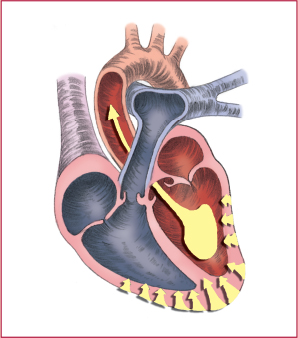To better understand preload, afterload, and contractility, think of the heart as a balloon. Preload Preload is the passive stretching of muscle fibers in the ventricles. This stretching results from blood volume in the ventricles at end-diastole. According to Starling’s law, the more the heart muscles stretch during diastole, the more forcefully they contract during systole. Think of preload as the balloon stretching as air is blown into it. The more air, the greater the stretch. 
Contractility Contractility refers to the inherent ability of the myocardium to contract normally. Contractility is influenced by preload. The greater the stretch, the more forceful the contraction—or, the more air in the balloon, the greater the stretch and the farther the balloon will fly when air is allowed to expel. Afterload Afterload refers to the pressure that the ventricular muscles must generate to overcome the higher pressure in the aorta to get the blood out of the heart. Resistance is the knot on the end of the balloon, which the balloon has to work against to get the air out. 
|